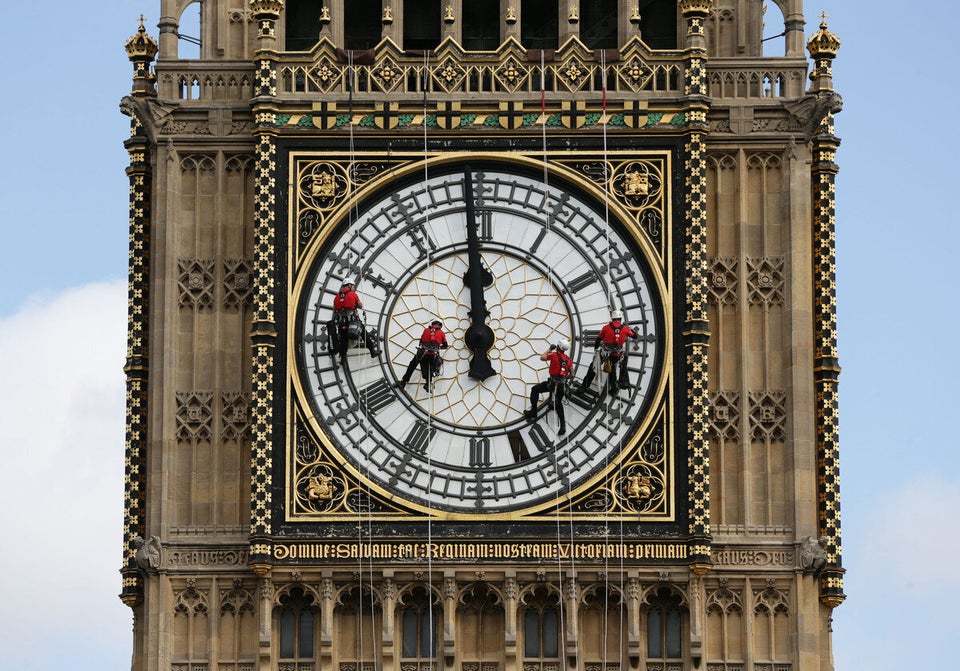A team of experts has begun a job that requires a head for heights and the ability to keep a close eye on the clock at one of Britain's most famous landmarks.
The specialists abseiled by rope to clean and inspect the faces of the Great Clock at the Palace of Westminster, and they wear ear defenders to protect their hearing from the chimes of Big Ben.
A working week has been set aside for the job, one day for each of the four clock faces, with a contingency day in case the weather makes it too risky to work on the 95.7 metre high Elizabeth Tower.
The clock was last cleaned in 2010 and as well as removing any dirt that has built up since then, the technicians will carry out a photographic survey to check the dials for damage.
Each clock face is made up of 312 pieces of pot opal glass, held together by a cast iron framework.
The clock was installed in April 1859 but at first would not work as the cast-iron minute hands were too heavy.
Once they were replaced by lighter copper hands, it successfully began keeping time on May 31, 1859.
The clock will continue to keep time during the cleaning process, but the hands on the face being washed do not move.
Deputy keeper of the clock Steve Jaggs said: "Big Ben is one of the UK's greatest icons, and cleaning the Great Clock is a vital part of its maintenance.
"The process is complex and requires a real head for heights. We have an expert team who will ensure that the clock is thoroughly cleaned and that this piece of our national heritage is safeguarded for future generations."
